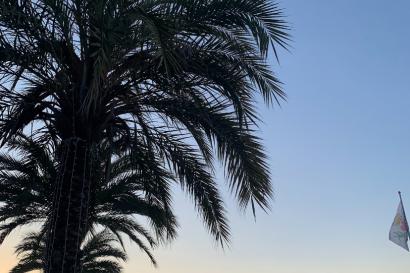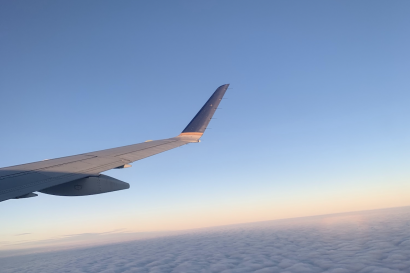On a beautiful Thursday morning, our IES Abroad group boarded a bus and headed to the hills of the Chianti region of Italy. We were ready to connect what we were learning in our classes to some traditional business in the area. We had two stops planned, the wine producers of Rocca di Castagnoli and the pasta producers of Pastificio Fabbri.

We began our trip and were warmly welcomed at the Rocca di Castagnoli vineyard.

There was lots of excitement as we waited to tour the vineyard, knowing that tons of history, culture, and, of course, magnificent wine were waiting for us.

The vineyard is located in an old military fortress, built in the 12th century. The 800-year-old buildings are incredibly beautiful and have been converted to the working wine facilities as well as a hotel for guests and partners.

The style, quality, and taste of wine are greatly affected by the storage and fermentation process.

The traditional oak barrels vary in size and age. The smaller the barrel, the more the wine touches the oak and impacts the taste of the final product.

The wine tasting portion was designed to both be fun and educational. Learning the proper way to taste, smell, and look at wine gave a whole new insight into the wine process

We were given a taste of four incredible wines, ranging from a young 2017 Chardonnay to a 2012 reserve Poggio a’Frati.

On our way out, we explored their little shop of wines, which included some fun wine themed decorations, like these people built out of wine corks.

Our next stop on this wonderful Chianti tour was the Pastificio Fabbri, an artisanal pasta company.

The first part of the tour was learning about how the grain, flour, and drying process all impact the taste, quality, and healthiness of the final product.

Pastificio Fabbri uses ancient grains for their pasta, which are taller, but therefore more at risk of falling over during growth. The shorter new type of grain is more durable, but because it is so close to the ground, it requires more pesticides to keep bugs away.

When looking at the final product, the mass produced, high heat product is a much brighter yellow, while the artisan, slow dried past is an off-white.

In a partnership between the Pastificio Fabbri company and the University of Florence, a study was done about the impact of ancient grains and slow drying process pasta on health.

They have a small production, and different machines designed for different types of pasta. While a large-scale mass production factory may take 1-3 hours to create the final product, Pastificio Fabbri generally takes 6-9 days.

The drying process is incredibly important for them. At no point in the production is the temperature allowed to go over 100 degrees Celsius (212 degrees Fahrenheit). This is to preserve the nutrients in the grain and flour.

Andrea Zelen
<p>I am a senior at the University of Illinois at Chicago, studying Communications and Business Administration. I was born in Serbia but grew up on the north side of Chicago, so I have a major love for the city. I have a passion for food, art, and adventure. I’m always ready to try something new and to see where life takes me, and this semester is my time to try out everything. I’m excited to share my study abroad story and see what excitement awaits me.</p>








